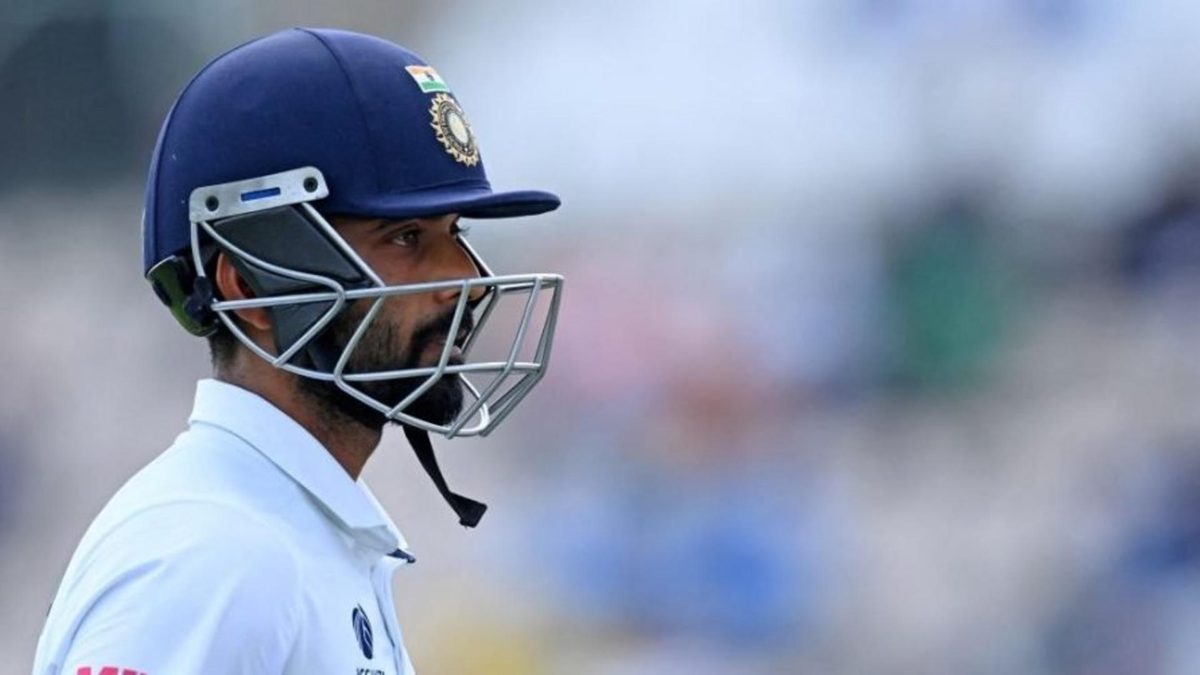
Eight years ago, on their tour to South Africa, India unearthed a middle-order star in Ajinkya Rahane. Now, as another trip to the country beckons, it could turn out to be the final hurrah for the 33-year-old, demoted in the leadership order and trying to save his place.
When India announced their squad for the South Africa tour, most of the attention went to the concluding paragraph of the release, where, very casually, it was revealed that Virat Kohli’s time as ODI captain was over. On Twitter, there was plenty of hue and cry over Kohli for the next few days; largely ignored was the fact that another senior player in the Test squad had also been served a leadership demotion.
Last December, Rahane led India to a comeback of immeasurable proportions, hauling them out of the crevasse created by the ignominy of ’36’ in Adelaide, and spearheading a historic series win that only once before had been achieved by an India captain. In Melbourne, he stroked his way to a memorable hundred, classy as ever, the buttery drives and glances coming beautifully off his bat. Many would agree that the first half of Rahane’s Test career was better than how the second half has panned out, but here he was, acing the biggest challenge yet. It surely felt like the beginning of Rahane 2.0.
Alas, it’s only proven to be the demise of Rahane 1.0, the Rahane we knew and adored for years. 2021 has been, by far, his worst year in terms of plain statistics, the first time he has averaged less than 30 (19.57) in a calendar year. Just months ago, he had ended as India’s highest run-getter in the previous World Test Championship cycle, the vice-captain contributing valuable runs from No.5 in the team’s ascent to the final. Now, he’s firmly at the centre of growing calls to be booted out, and the pressure is showing.
The selectors held on to him, the senior players often rallying around him despite the thinning returns, but the patience is finally starting to run out, it seems. How else do you explain the sudden, and not-so-subtle shift of power: for the South Africa tour, Rahane’s vice-captaincy band has been handed to Rohit Sharma.
It makes the possibility of a future axing much easier, and there are enough reasons to believe that could happen soon. In terms of quality, Rahane might just be in the top-most bracket of all Test batters who average less than 40, but you need numbers to survive after all, even if you have played 79 Tests.
In a team like India’s, though, batting riches run so deep that ready replacements are available at any given point of time, even though reputation tends to take precedence over form and save careers, even elongating them to embarrassing extents.
Since those 112 runs at MCG, Rahane has managed two fifties in 22 innings, a worrying figure for any top-six batter. It’s a short episode of drought in an extended run of underwhelming returns. In Rahane’s last 50 Tests, he average just 32.73. At home, where most batters of his tribe find it easier, Rahane has hit just one century in the last five years.
Shreyas Iyer, brought in as a fill-in for the injured Rahane in Mumbai against New Zealand, equalled that number in his maiden Test, stroking away to a century and half-ton in his very first outing. Around the same time, Hanuma Vihari, shoved aside after that innings at the Gabba, piled on the runs for the ‘A’ side in South Africa, making his case even stronger. These are all ready reminders that there are plenty lying in wait: we’ll only see more of them when the fascination for Rahane ends.
The upcoming South Africa tour will be Rahane’s third to the country; his first visit in 2013 gave him the identity of an unflappable crisis man, ready to dive into any trouble to help his team out. Just two Tests old, he had held his own against an attack featuring Dale Steyn, Vernon Philander and Morne Morkel to hit 51* and 96. Eight years later, the trio is long gone, but Rahane remains. Just about.
The three-Test series could be his final chance to save some of his lost reputation, to hold on to his spot just a little longer, and to remind fans who have started to move on. The vice-captain’s tag doesn’t mean much inherently, but the switch in names could signify the end of an era and the start of another, with the team finally looking to move on, leaving behind a cricketer who could have been so much more than what the numbers show.








